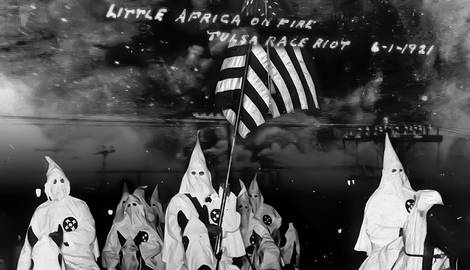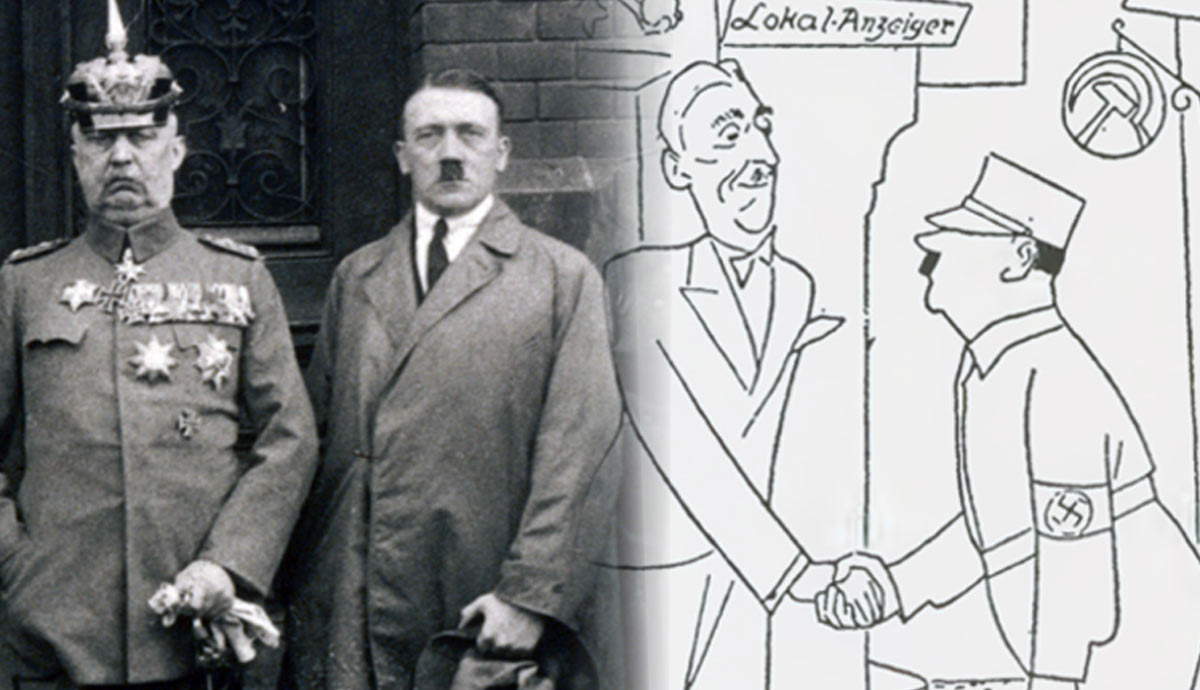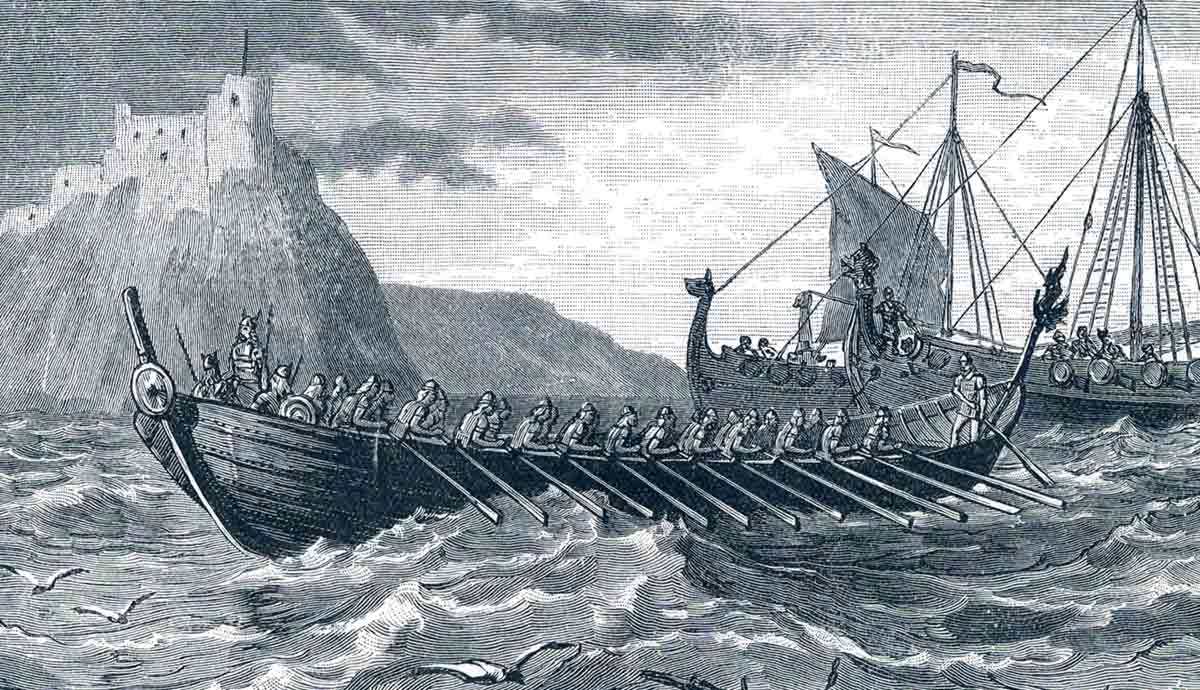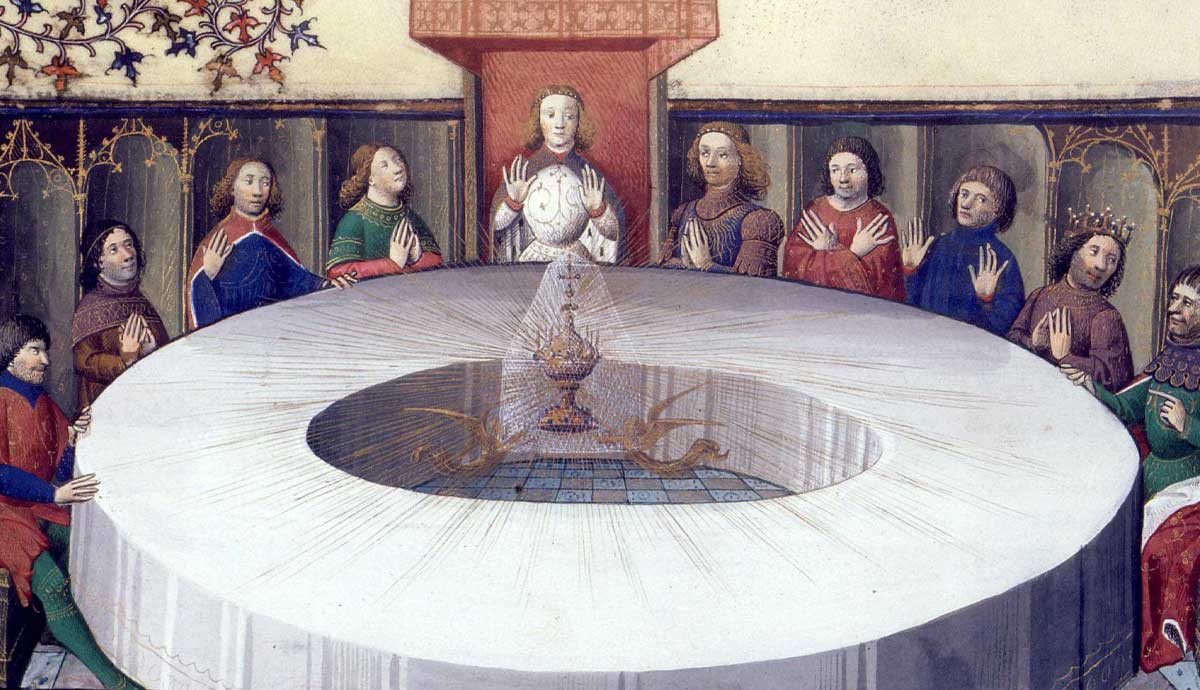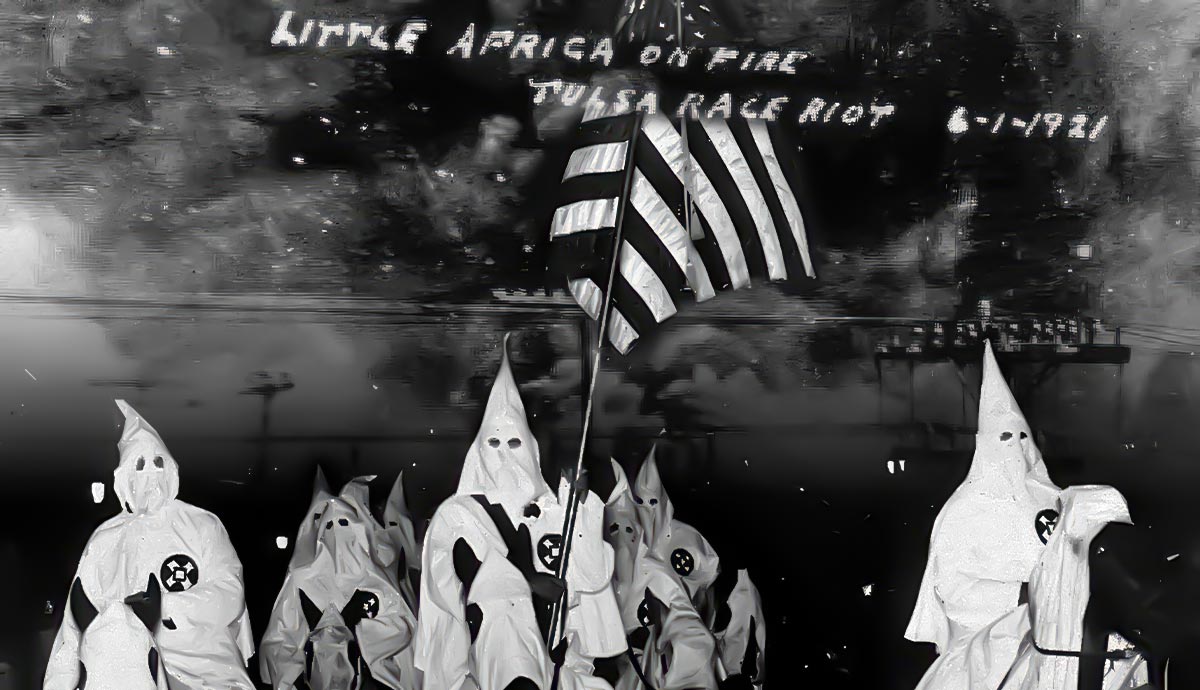
summary
- Tulsa Race Massacre 1921: The Tulsa Race Massacre (May 31-June 1, 1921) followed the arrest of Dick Rowland, a Black teenager accused of assaulting Sarah Page, a white woman. The truth about the alleged assault is still unclear.
- Greenwood Attack/Black Wall Street Massacre: A white mob attacked the Greenwood neighborhood, burning, looting, and killing Black Tulsans, as law enforcement and the National Guard either did nothing or actively participated in the violence.
- Tulsa Massacre Deaths and Destruction: Hundreds of Black Tulsans died, and over 1,200 homes and businesses were destroyed.
- Tulsa Race Massacre Cover-Up: The massacre was covered up for decades by the government and media, and no one was ever held accountable for the crimes committed.
- Tulsa Race Massacre Restitution & Remembrance: Today, efforts are underway to remember the traumatic event and provide restitution to the victims and their descendants.
- Greenwood Tulsa Today/Black Wall Street Legacy: Once known as the “Black Wall Street,” Greenwood still stands today and continues to be a haven for Black creativity and industry.
From May 31 to June 1, 1921, massive mobs of white rioters destroyed the Greenwood neighborhood of Tulsa, Oklahoma. This instance of racial violence was covered up for decades by the Oklahoma government, which enacted martial law in the aftermath of the destruction. Blame was placed heavily on the Black Tulsans who had suffered during the incident, with no condolences and little help offered to those who lost family members or their homes and businesses. This article will shed light on the 102-year-old massacre, its causes, effects, and aftermath.
Before the Tulsa Race Massacre: Black Wall Street

After the Civil War, thousands of Black Americans established settlements in Oklahoma. Between 1865 and 1920, Oklahoma, which was largely still considered “Indian Territory,” had the largest number of Black townships in the United States. One such township was established by O.W. Gurley, a Black landowner, within the city of Tulsa. Gurley purchased the land, about 40 acres in size. As a part of the Dawes Act, African Americans who had assimilated into the Native American tribes in the area were allotted tracts of land.
Gurley’s vision was a town by Black people and for Black people. His business, a boarding house for African Americans, was first established in Greenwood in 1906. He also began loaning money to Black Tulsans who wanted to start their own businesses. Gurley attracted other Black entrepreneurs, like J.B. Stratford, who established the largest Black-owned hotel in the United States. He also drew publisher A.J. Smitherman, who founded the Tulsa Star, a newspaper exclusively for Black Tulsans, which he used as a tool to keep Greenwood socially minded and forward-thinking. The Star often published useful information for Black Oklahomans about their legal rights and legislation that could benefit or harm them.

Greenwood had no choice but to be an insulated community, as it was literally on the “other side of the tracks” from the highly segregated downtown Tulsa. The community, however, was built for such insulation and flourished within its boundaries. Greenwood was an economically self-sufficient neighborhood and was self-governing as well. The town had its own school system, post office, bank, hospital, and transportation services. Greenwood Avenue, the main drag of the neighborhood, was jam-packed with stores, salons, nightclubs, and movie theaters.
Self-sufficiency was easily established between residents who were poorer and more well-off business owners. Those who worked outside the community (usually in menial roles) spent their money within the community, keeping Greenwood not only stable but prosperous. This lent the neighborhood its nickname of “Black Wall Street,” as it served as a model for economically independent Black communities throughout the country.
What Caused the Tulsa Race Massacre?

The rest of Tulsa outside of Greenwood was not without its own wealth, which was in large part funded by the oil industry. However, the growing animosity of white Tulsans against the Greenwood community was reaching a boiling point by the 1920s, with a resurgence of the Ku Klux Klan and the Oklahoma state government constantly threatening Black rights.
Residents of Greenwood felt the pressure and feared violence fueled by Oklahoma’s adoption of Jim Crow and the rise of groups like the KKK. Despite Tulsa being a wealthy, cosmopolitan city, the crime rates were high, especially in instances of racial violence. This was not uncommon for the United States during the interwar period, as shown by the “Red Summer” of 1919, when anti-Black riots cropped up in major cities nationwide. The Tulsa Star, in an attempt to remedy the violence with counter-measures, encouraged Greenwood residents to appear armed at courthouses and jails throughout the city when Black people were being detained or facing trial.
On May 30, 1921, 19-year-old Dick Rowland, a Black teenager, entered an elevator inside the Drexel Building on Tulsa’s South Main Street. The only other occupant was the elevator operator, a young white woman named Sarah Page. Witnesses said that at some point, Page screamed, the elevator opened, and Rowland ran out of the building. The next morning, after several hours of rumors had already circulated the city, Rowland was apprehended and arrested by the Tulsa police.

Claims of sexual assault spread like wildfire throughout the city’s white community, which even prompted the Tulsa Tribune’s front page headline that Rowland was arrested for assaulting Page. The truth is, even today, unclear. The only two people who knew what had happened were Page and Rowland. Still, like a massive game of “telephone,” the rumors surrounding the incident incited several emotions in different parts of Tulsa.
By the end of the day on May 31, a white mob gathered around the courthouse, demanding that Rowland be released to them. After Sheriff Willard McCullough refused and barricaded the floor on which Rowland was being held, the crowd only grew more irate. The tension was further fueled by a group of 75 armed Black men who also gathered at the courthouse to help prevent a possible lynching. They were met by a group of nearly 1,500 white men, some of whom were armed. The incident had moved away from the arrest of Rowland, and by the time shots rang out outside the courthouse, the next 18 hours were set in stone, and Greenwood would never be the same.
What Happened During the Tulsa Race Massacre?

The group of Black men who had gathered at the courthouse was outnumbered, and after shots were fired and at least twelve men, Black and white, were dead, the group attempted to retreat to Greenwood. The groups of white vigilantes pursued, and firefights broke out throughout the city, focusing mainly on the Frisco Rail Yard, the dividing line between Tulsa’s Black and white communities. It was reported that passengers on an incoming train had to lie on the floor to avoid gunfire.
Some white mobs then began converging on Greenwood, burning, looting, and murdering at random. It was said that some white men had been deputized as auxiliaries to local law enforcement, being supplied with weapons and orders to quell the violence, which did not happen; instead, the opposite occurred. By four o’clock on the morning of June 1, over two dozen Black-owned businesses and homes had been looted and burned. The local National Guard, reportedly deployed to help Greenwood residents, treated Black Tulsans as the enemy.

The National Guard was supplied with arms by the Tulsa police, including a machine gun, which they took on “patrols” throughout the downtown area. Not only did the all-white members of the National Guard, American Legion, and police force protect the white mobs that ravaged the Greenwood district, they assisted them. It was increasingly clear that the authorities would allow violence and destruction against the Black community because they, too, saw Greenwood’s residents as antagonistic.
Rumors fueled the fight constantly. Panic caused by the idea that Black Tulsans were calling in “reinforcements” from outside the city only gave the white looters, arsonists, and murderers all the more reason to attack. The worst was yet to come.
At dawn on June 1, a larger cohesive group of white men poured over the Frisco line and began an organized assault on Greenwood. Black Tulsans had very few choices: they could attempt an escape, or they could hunker down and fight a losing battle. This became all the more apparent when, as described by Black Tulsan physician Dr. R.T. Bridgewater, when “A whistle blew…aeroplanes [sic] began to fly over us, in some instances very low to the ground. A cry was heard from the women saying ‘…they are shooting upon us.’”

These planes, manned by white mob members, angled around the neighborhood so their occupants could shoot out the windows and, in at least one case, drop explosives on a fleeing group of Black people. White mobs took a systematic approach to the residences in Greenwood: either killing or imprisoning the occupants, looting the home, and burning it. Firefights that mowed down Black Tulsans in the street were also ongoing and were not only perpetrated by random white men but by the authorities as well.
By the time martial law was declared at 11:29 a.m. on June 1 and State Troops from Oklahoma City had arrived, the carnage was nearly fizzling out. Most Black residents had either been killed, had escaped to the countryside, or were among some 6,000 people held against their will under armed guard at the local fairground. The incident lasted approximately 18 hours and wreaked havoc on the Greenwood district.
How Many People Died in the Tulsa Race Massacre?

While Oklahoma’s official death toll was and is still only 36 people, modern historians estimate that 100-300 people were killed during the Tulsa Race Massacre. One thousand two hundred fifty-six businesses and homes were destroyed, along with virtually every single other building that stood in Greenwood.
Black Tulsans, many of whom were World War I veterans, fought valiantly, though they were outnumbered, to save their homes and businesses. They could not have predicted, though, that local and state governments were enabling the violence, putting them at another distinct disadvantage.
Did Anyone Get Arrested for the Tulsa Race Massacre?

No one was ever prosecuted or punished by the law at any governmental level for the destruction and murder that took place in Greenwood. The Black residents detained by the National Guard were initially also not allowed their freedom without the help of a white “sponsor.” This precluded the fact that, over the 18 hours between May 31 and June 1, over 8,000 people became homeless, so even if the state released them, they had nowhere to go.
The media and the government refused to acknowledge the massacre. The Tulsa Tribune, the newspaper that sparked anger with its headline about Rowland’s arrest, removed the front page news from its archive. Police and state militia archives simply never mentioned anything relating to the events. The government and the media, until the 1990s, covered up the atrocity and acted like it never happened.
What Happened to Greenwood Tulsa After the Massacre?

The Tulsa Race Massacre wreaked havoc on Greenwood. Though its residents fought to defend their homes and businesses, almost all buildings in the 35 square blocks of the neighborhood lay in ruins. Despite the lack of support from the city’s authorities, Black Tulsans began the arduous tasks of rebuilding Greenwood almost immediately, in many cases starting from scratch.
It is worth noting that the local Red Cross proved invaluable in the aftermath of the massacre. They gathered reports of casualties and injuries, aided in relief efforts, and treated those affected. The Black community in Tulsa, despite the disadvantages imposed by almost every single facet of government, began to rebuild on their own. The Red Cross did not assist them in this endeavor and again relied on the savvy of Black entrepreneurs to get back on their feet. Even this, the independent rebuilding of the Black community, was also initially impeded by the Oklahoma government.
The effects of the massacre continued to impact the Greenwood’s residents for a long time, affecting generational Black wealth in Tulsa. In the following decades, home ownership, occupational status, and net worth declined among Black Tulsans, especially considering that neither the government nor insurance companies compensated the many victims of the violence.
Tulsa Race Massacre Reparations Update 2025

In 1996, on the 75th anniversary of the massacre, the first memorial ceremony was held at Mount Zion Baptist Church, and a physical memorial was placed outside of the Greenwood Cultural Center. In 2001, Oklahoma established a commission to investigate the incident. In their final report, the commission recommended significant restitution to the Black residents of Tulsa, including direct reparations payments to survivors, descendants of survivors, and a memorial for the reburial of the victims of the massacre.
Though the official title given to the incident was the Tulsa Race Riot of 1921, in November 2018, it was changed to the Tulsa Race Massacre. The commission decided that the word “massacre” more accurately reflected the event and its toll on Greenwood.
As of today, the victims of the Tulsa Race Massacre have yet to receive any compensation or reparation. In 2023, a lawsuit filed by three of the living survivors of the violence against the City of Tulsa was dismissed. Similarly, in June 2024, Oklahoma’s Supreme Court rejected another lawsuit, stating that the state’s public nuisance law could not address the effects of the “unjust, violent, and tragic moments of our history.” On February 4, 2025, Tulsa Mayor Monroe Nichols, the first Black person to hold that office, announced his support for a new plan aiming to secure reparations for the victims of the massacre.
Today, Black Wall Street still stands, albeit with only one original building from before the massacre. The neighborhood is a testament to the Tulsan Black community’s resilience in the face of violence and destruction. The residents today keep the memory of the district alive through memorials and education. The Tulsa Historical Society, for example, has a free virtual exhibit, open at all times during the day, that documents the atrocity and educates the community. The neighborhood is a haven for creatives and the Black industry, as it once was, over 100 years on from its greatest tragedy.
Tulsa Race Massacre FAQs
What was the extent of the destruction and loss of life during the Tulsa Race Massacre?
The destruction during the massacre was devastating. Within hours, Greenwood was systematically burned and looted by white mobs. Homes, businesses, churches, schools, and the library were reduced to rubble. The Oklahoma Bureau of Vital Statistics recorded only 36 deaths. However, modern studies suggest between 100 and 300 people died during the Tulsa Race Massacre, making it one of the deadliest massacres in US history.
What happened to Dick Rowland after the Tulsa Race Massacre?
Dick Rowland’s life after the massacre remains shrouded in mystery. Some reports suggest that he fled Tulsa and may have died in Oregon in the 1960s, while others claim that he returned to Tulsa and lived there until his death. In Tulsa, Dick Rowland, who liked to call himself “Diamond Dick,” became a subject of folklore after the massacre.
Who was Sarah Page?
Sarah Page, born Sarah Beaver, was raised in Arkansas near Oklahoma. In 1920, she married Raymond Page, but the couple divorced soon after. Sarah had previously been married to Robert Fisk. After the Tulsa Race Massacre, Sarah Page never publicly spoke about the event. She then moved to California, where she lived with her third husband, Fred E. Voorhies, until her death in 1967.
